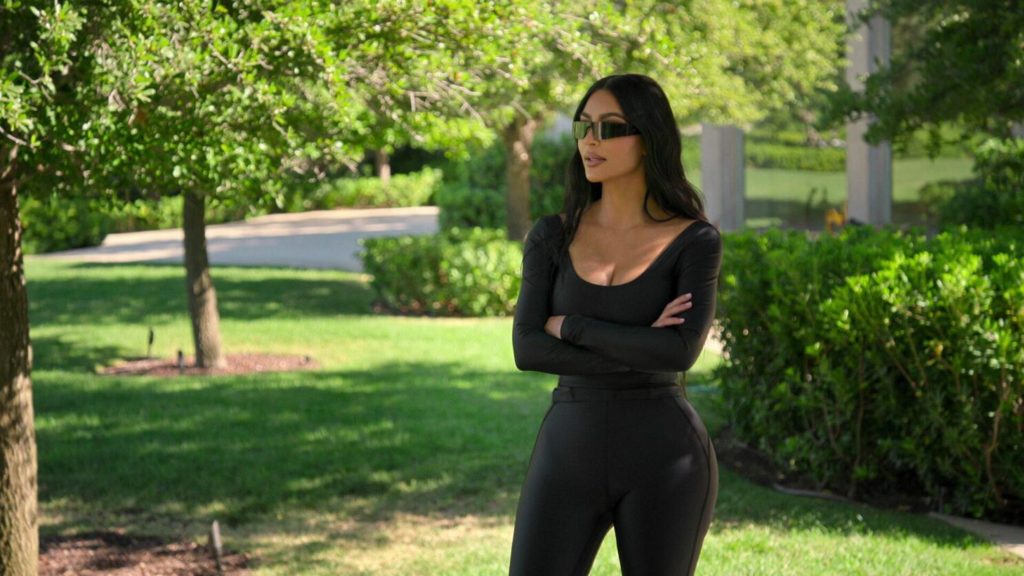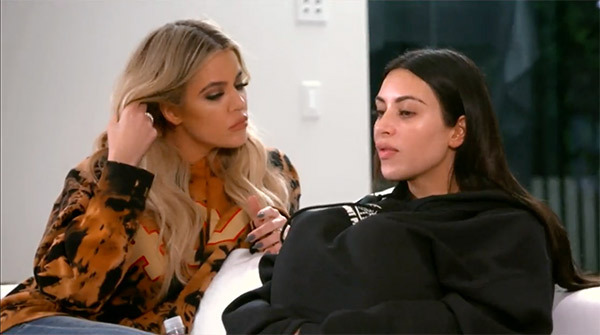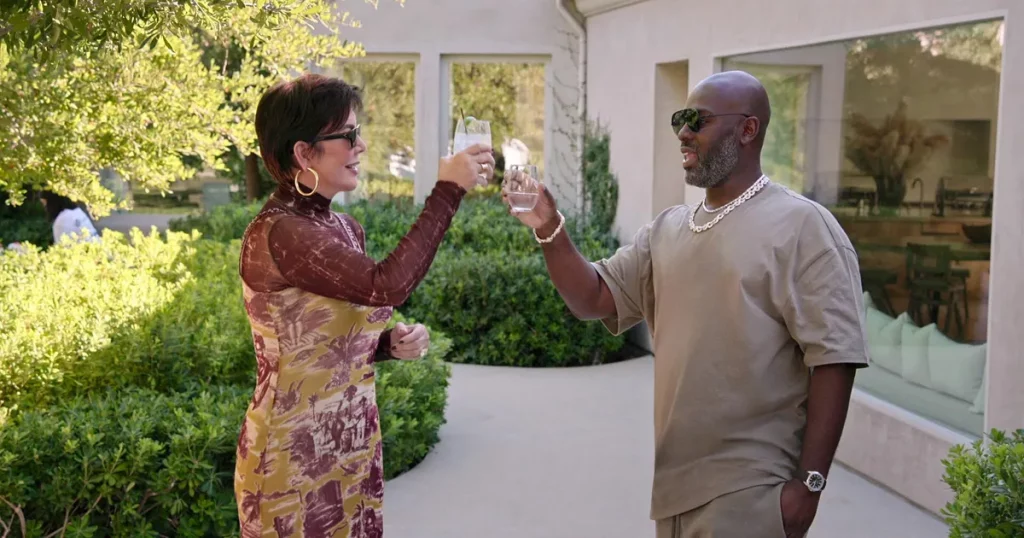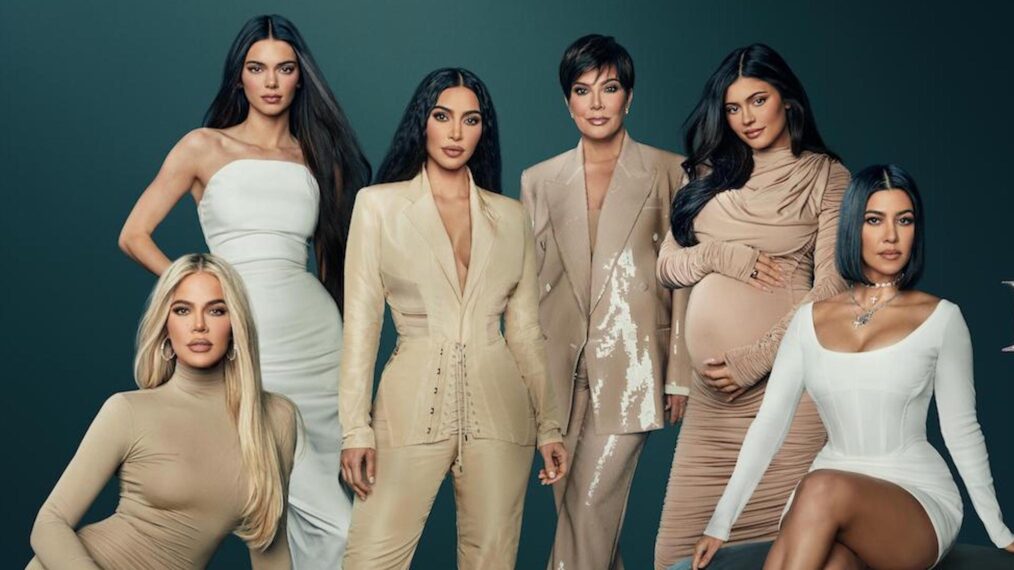The Kardashian clan has a new show on Hulu, simply titled The Kardashians. Leading up to its release, Bustle ran a cover story of the oldest Kardashian sibling, Kourtney, with the headline, “Kourtney Was Right All Along.” In 2015, Kourtney’s younger sister Kim told her, “If you had a f*****g business that you were passionate about then you would know what it takes to run a f*****g business, but you don’t.” Now it seems that Kourtney has found herself in a business sense and a personal sense. Her self-actualization comes just as society begins to wake up to who the Kardashians really are.
Although best known for their on-screen hijinks, family feuds, and increasingly glamorous lives, the family makes no effort to conceal their business savvy. In fact, their business enterprises are central to their new show that is shot in a documentary style. This stylistic choice implies that the Kardashian’s lives are no longer only worthy of fanfare but of serious contemplation. The new show asks, How did they get here? Where are they going? The show could only ask these questions after the fourteen-year run of the original series, Keeping Up With the Kardashians, during which society began to digest the Kardashians not just as reality stars, but as serious businesswomen.
The Kardashians receive backlash, as all famous people do. Some of this backlash is warranted and some of it isn’t. After all, the Kardashians are successful businesswomen living in a patriarchal society. Consequently, popular discourse often finds a way to undermine their success. “They’re famous for being famous” is a common way to trivialize the Kardashian’s success. However, being famous for being famous is actually an accomplishment. The Kardashians leverage their appeal to create a self-sustaining cycle of fame: their personal lives generate income for their businesses, and their business ventures generate interest in their personal lives. No one knows where it starts or ends.
Many consumers feel hijacked. But what do the Kardashians actually do? Although the Kardashians run businesses, plenty of people run businesses and aren’t billionaire pop culture phenomena. The Kardashians are a pop-culture force that is overtly an economic force. Generally, most pop culture icons don’t advertise the fact that they are economic entities. Flaunting your wealth makes you less relatable. However, the Kardashians make their lavish lifestyle part of their performance.
A Product of the Bloated Media
In the opening of the new show, the camera flies through each Kardashian-Jenner mansion, highlighting the vastness of each one. While other celebrities remain hesitant to do so, the Kardashians advertise their wealth because fame itself is part of their brand. The public generally equates celebrity opulence with vanity and wastefulness. Although the Kardashians are not immune to these criticisms, their excess wealth fulfills the initial promise of their careers. The Kardashians set out to prove they were worthy of glamorous lives. Showing off their lifestyle proves they could achieve what they set out to do. For every room of their mansions they reveal, they validate the public’s initial interest in them.
Alongside their wealth, the Kardashians portray fame itself as an accomplishment. When someone achieves fame, they use that fame to generate income in new ways. For example, Taylor Swift, Beyonce, Katy Perry, Nick Jonas, and any number of performers use their fame to make money through endorsement deals. They don’t necessarily get endorsement deals because they’re good at what they do. (Although many would argue that they are.) They get endorsement deals because a lot of people pay attention to what they do. In the current age, being good at what you do doesn’t matter. Therefore, the Kardashians, who admittedly don’t have “talent,” can succeed. In the twenty-first century, if you can keep the bloated media focused on you, you can do whatever you want.

The Role of Confirmation Bias
At the time Keeping Up With the Kardashians premiered in 2008, Kris Jenner was married to gold medal-winning Olympic athlete Caitlyn Jenner, with whom she had two children. She had four older children with her late ex-husband Robert Kardashian, defense attorney to his close friend OJ Simpson. Before their show, the Kardashian-Jenner clan was famous-adjacent. But the stratospheric level of fame they would achieve justifies their personalities. In season one, they already knew how to behave like celebrities.
In the season one finale, Kim panics when she might be responsible for the possibility of nude photos of Kourtney leaking. The FBI visits their house to assure the photos don’t leak. It’s a lot of drama for a family barely on the public’s radar. The episode title, “The Price of Fame,” glosses over the fact that, at the time, the Kardashians weren’t really famous. However, they knew how to live their lives like people were watching. They modeled the media strategy they would employ when millions eventually did tune in: they created, lived out, and disseminated scandals for public consumption.
Ann Powers, writing for the LA Times, said, “a constructed self has long been a feminine reality.” The Kardashians took advantage of the fact that, within patriarchy, the majority of people do not view performative femininity as a constructed self. They view it as objective reality. This ignorance allowed the Kardashians to succeed on a reality show, where the audience needs to suspend disbelief. The Kardashians could enact drama on camera and no one would question whether it was real or not because the constant presence of drama confirmed many biases against women that viewers wanted to affirm.
In his video, “How Bullying the Kardashians Made Them Billionaires,” the YouTuber Ibrahim Kamit noted that Kris Jenner “mastered capitalizing on society’s obsession with scrutinizing women.” The traditional viewpoint of women through the lens of “caregiver” has enabled this obsession to exist throughout history. Patriarchal societies view women as conversation pieces instead of assertive figures. The Kardashians’ actions violate stereotypical gender roles because, through their assertiveness, they take on active roles in their family, challenging their father figure, Bruce Jenner. They also challenge their biological father postmortem by creating a show where the plotlines rely on behavior he surely wouldn’t have approved of. This tension symbolizes how they break patriarchal molds outside of their family system as well.
However, the Kardashians also conform to many stereotypical gender roles. For example, Kim advertised the fact that she lost sixteen pounds over the course of three weeks to fit into Marilyn Monroe’s “Happy Birthday, Mr. President” dress for the 2022 MET Gala. Although the Kardashians, through Khloe’s size-inclusive clothing brand Good American, attempt to promote body positivity, Kim’s statement about her willingness to change her figure to fit into a dress promotes the exact opposite. It promotes the idea that women should change their bodies to meet impossible beauty standards. Kim wants to embody those standards, while still being a symbol of empowerment. Through this contradiction, the Kardashians pander to people who want encouragement by packaging an unattainable lifestyle.
Packaging the Patriarchy
Confronted in the past with the question of whether or not the family promotes unattainable beauty standards, Kim said that she feels justified in showing off her figure because she “puts in the work [for it].” She may have “put in the work” to lose sixteen pounds in three weeks, but that’s not a healthy weight loss goal, nor does it send a good message to the millions of young women following them, who may have self-confidence issues regarding the clothes that they can fit into. For the record, even after the weight loss, the dress didn’t even fit Kim completely: a fur coat was used to cover an area where the seam didn’t close.

Kim gets away with encouraging unhealthy beauty standards because her figure was once unpopular: a stark contrast to the blonde waifs, such as Brittany Spears and Paris Hilton, who embodied the beauty standards of the early 2000s. Kim, with an Armenian skin tone and strong curves, frames herself as a representative of diversity. Her shapewear brand Skims conveys this narrative: “I used to cut up and sew different styles together because I could never find the shape I was looking for. I would also dye pieces with tea bags to match my skin tone…” The inclusive message of Skims helps Kim portray herself as an outsider and advocate. However, Kardashian has used her marginalization, whether real or self-imposed, to appropriate black culture.
The Kardashian-Jenners portray changing their appearances to meet a certain standard as a paramount achievement. The patriarchy relies on this type of conformity. Kylie Jenner launched a billion-dollar business from her desire to augment the appearance of her lips. In the beauty industry, patriarchal actors make money by coercing women to internalize the idea that they should alter their appearances to meet a certain standard. Traditionally, the benefactors of this oppression have been men. Now it’s the Kardashians. Today’s most famous family relies on patriarchal belief systems to turn a profit but calls doing so empowerment because they’re not men.
Certainly, it’s an improvement that the benefactors of patriarchal oppression are no longer men. It signifies that wealth might be repurposed to lift women up instead of prolonging a cycle of conformity. Although the Kardashians monetize this conformity, they show monetizing their appearances, as opposed to men doing so, can yield empowering results. For example, the Kardashians have redefined motherhood and parenthood in a way that accommodates their careers and their independence as women. By using their wealth to rebel against a societal norm, they frame themselves as victims and become more relatable.
The Kardashians sell the idea that average consumers can break free of patriarchal oppression if they satisfy its initial standards. But it’s a law of patriarchy that not everyone can live up to. The Kardashians use this hidden truth to generate interest in their business enterprises, which lure consumers to a North star they will never reach. Who else can lose sixteen pounds in three weeks? It’s not possible in a healthy way.
Sisterhood of Victimhood
The Kardashian’s narrative of victimhood began with Kim’s sex tape. The Kardashians enact performative victimhood to elicit public sympathy, which creates plotlines for their show and enhances their brand. Ironically, this performative victimhood mirrors the PR facade espoused by Kim’s rival Taylor Swift. Swift, accused of “playing the victim” in her feud with Kim’s ex-husband Kanye West, became the cultural scapegoat for a trick the Kardashians were also playing on society.
Both Taylor and Kim rallied America around their victimhood at different times. Swift did it by portraying herself as the small country starlet who was preyed upon by a music industry heavyweight when Kanye West interrupted her acceptance speech at the 2009 VMAs. Kim did it by using the leakage of her sex tape to capitalize on two marketable taboos: the idea of a coveted sexual object in private, as well as a white girl being taken advantage of by a black man. Ray-J, Kim’s male co-star in the sex tape, allegedly believed the tape would make him “white girl famous.” This is exactly what happened to Kim.

Ray-J’s sister said to Page Six, “White girls can do anything and be famous; a white girl could slip and fall in the middle of Rodeo Drive, and all of a sudden she’s a star.” This phenomenon exists because American culture endows white women with innocence and purity: virtues not granted to women of color in Western cultures. This reference point of naivete makes any transgression against social norms more interesting in a white girl, which explains Taylor Swift’s increased name recognition after her inaction when West interrupted her speech. It also explains Kim Kardashian’s fame for something everyone does in private. The Kardashians, known for appropriating black culture, leveraged their whiteness to kickstart their fame.
However, the Kardashians approached their ascension to “white girl” fame with caution. They knew that if their harnessing of cultural taboos became obvious, no one would care about them. Society would shame them for using a sex tape to their advantage. Although they used the sex tape strategically, the Kardashians wanted to portray themselves as helpless to prevent its leakage, because society would have sympathy for women acting helpless. The Kardashians had to upend the patriarchy enough for their own success to become possible, but not enough so that people would doubt their origin story, which hinges on their alleged conformity to a stereotype.
Emerging from the confines of her portrayal in the sex tape, Kim made the reclamation of her sexuality empowering through reality TV, ad campaigns, various businesses, and social media. The sex tape is an embodiment of the male gaze, and, in the rebellion of it, Kim became a symbol of female beauty existing for its own sake. Kim’s monetization of her beauty is empowering because it prevents men from profiting from female beauty, which has happened throughout history. It also contrasts society’s initial impression of her, in which her sexuality was portrayed in a leaked video she allegedly had no control over. In an early episode of Keeping Up With the Kardashians, that birthed the “You’re doing amazing, sweetie!” meme, Kim modeled for Playboy. However, twenty years into her career, she makes more money for herself from one Instagram post than Playboy did from any of its business dealings with her.
The sex tape helped establish the premise that Kim Kardashian is a victim, preyed upon by ex-boyfriends, her siblings, the patriarchy at large, and, eventually, the trappings of her own fame. (Now that’s meta!) From this place of victimhood, Kim Kardashian launched a brand of empowerment, transferring the same narrative of victimhood to her family members like genetic material. When the Kardashians receive criticism about their lives, which they attract through their show, they use that criticism to create a dialogue that frames them as survivors of oppression.
However, they create both sides of the dialogue. They offer themselves up as avatars for what society wants to criticize in women: when you judge them, they win. You buy the product. The public may have created the narrative around Kim’s sex tape, but the Kardashians created a narrative around every cheating scandal, failed marriage, and plastic surgery (or lack thereof), and profited from the public consumption of those narratives, which mostly revolved around negative commentary on them.

The “Momager” Legacy
In 2022, the Kardashians generate frequent headlines, which generate the same cultural spark as the sex tape. This, in turn, gives the Kardashians a platform to generate a counter-narrative, which generates more controversy, and the cycle continues to infinity. They embody the idea that women are taken advantage of by baiting sexist criticism, which they use to portray themselves as victims and then symbols of empowerment, even though they pandered to that sexist criticism in the first place.
The Kardashians send the message that viewers can lead a glamorous lifestyle if they invest in themselves, express themselves, and have no regard for people who doubt them. At least, they sell that fantasy. Kim’s ex-husband Kris Humpries once told her that, “[After having children] no one will probably care about you.” However, Kim’s most recent cover of American Vogue features a photoshoot with her children. Motherhood has become integral to her own brand and to the brands of her siblings. The Kardashian-Jenners use motherhood to support an empowering facet of their collective image, as parents who successfully juggle their careers and roles as parents.
Kris Jenner wrote the playbook for this image by coining the term “Momager”. She taught her children that the patriarchal role of a comforting and encouraging mother doesn’t need to stifle a parent’s ambitions. Kris has worked with her children to create several billion-dollar businesses. Under the Kardashian mantle, the role of “mother” is both empowering and lucrative. When Kim included her children in the Vogue photo shoot, she invariably received questions about having children in the public eye. How much of their lives will you show? Having children has brought the Kardashians more attention- and more money. Kris Humpries was just mad because he couldn’t keep up.

Comments